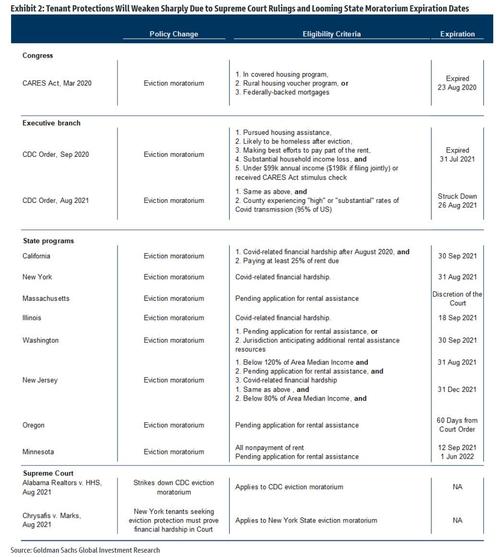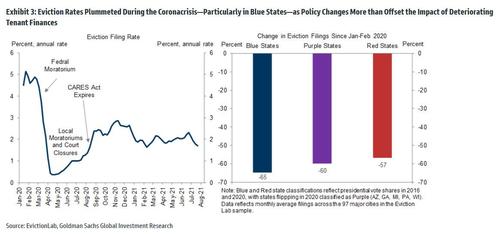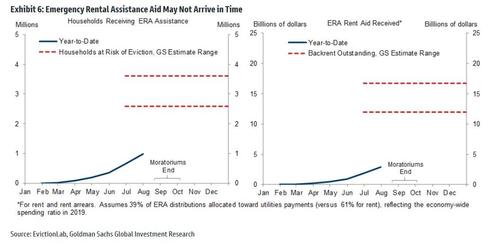Authored by Victor Davis Hanson via AmGreatness.com,
Afghanistan has been reinvented as the best-equipped terrorist nation in the world, basking in the prestige of humiliating the world’s superpower…

Joe Biden’s scripted or no-questions press conferences, and the clean-up afterward by Antony Blinken, Jake Sullivan, and Jen Psaki, have been some of the most misleading episodes in modern presidential history—mostly in what was not said rather than was exaggerated, warped, and misrepresented.
Biden as Commander-in-Chief
The more Joe Biden mutters “The buck stops here” or “I take full responsibility,” the more we know he will not – and not just because of his now reduced mental state, but because 1) he repeats the same opportunist messaging that he has for the last 50 years of his political career, and 2) the only true thing he could say was “I ordered a withdrawal in the most reckless manner in U.S. military history.”

When Biden then blames Donald Trump, it raises the immediate questions:
1) If the Afghanistan deal was so flawed, why did Biden stick with it, given his other radical departures from what he inherited on the border, on fossil fuels, on the Middle East—on just about everything before January 20, 2021?
2) So, was it good or bad to withdraw all U.S. troops? Was Trump wrong to have bequeathed him a policy of graduated withdrawal, but Biden was right to have continued it for a while—only to have accelerated it into surrender and flight?
3) Why did the violence erupt on Biden’s rather than on Trump’s watch? And was his order for a hasty flight in the dead of night from Bagram Air Base also the inherited Trump departure plan?
When Joe Biden now threatens al-Qaeda, ISIS-K, and others with revenge, he sounds, unfortunately, more like the ridiculous Joe of “Corn Pop” braggadocio with his weaponized chain, or Joe taking Trump behind the gym to womp on him, or young Joe Biden slamming the mouthy kid’s head on the lunch counter. Speaking softly with a club is preferable to being loud with a twig.
We have all heard, ad nauseam, too many of Biden’s He-Man stories. The latest rhetoric does not hide the fact that Biden had opposed the Osama bin Laden raid, criticized the termination of Qasem Soleimani, left Afghanistan in the most shameful retreat in U.S. history, and is now begging the Saudis to pump more oil after cutting back on our ample supplies and trashing Riyadh as part of his return to the Obama pivot to Iran.
Biden loves appeasement lists. He provided the Taliban with a list of whom we wished to evacuate. (When the Taliban soon knock on the door of an American in Kabul who thinks their message will be, “We’re here to escort you to your flight”?) In the same manner, Biden provided Putin with a helpful list of institutions he wanted Putin’s satellite cyber-criminals to exempt from hacking.
The blame for this sordid mess is threefold:
1) The media that knew Biden was debilitated and so covered up that fact to carry the candidate across the finish line in November.
2) The Democratic apparat that envisioned Biden lasting just long enough (the country be damned) to provide the needed cover of a sharply left-wing agenda.
3) The Pentagon’s top brass, active and retired, who for years leaked about and obstructed Trump, sought to toady up to the press in its “wokeness,” and posed as speaking truth to power, but have now gone strangely silent when we need public voices to oppose the present Afghanistan nihilism of the administration.
Partnering With the Taliban
The Taliban are to al-Qaeda and ISIS as the Nazis in World War II were to fellow fascists of the Spanish Blue Division, the Hungarian Arrow Cross, and the Romanian Iron Guard—ethnic and ideological variants of the same radical nihilist cause. No act of terror goes on in Afghanistan without someone in the Taliban ordering or allowing it. Their “ring” around the airport is only an obstruction for whom they choose: Americans and their allies.
The Taliban may for a moment seek plausible deniability of suicide bombings to hasten the U.S. departure in shame, temporarily disavowing credit for slaughtering Americans as they leave. But as soon as U.S. soldiers are gone, the Taliban will give free rein to its hounds al-Qaeda and ISIS, brag that they drove out the United States, and then resume their accustomed murdering and raping of civilians. We should expect lots of silent, under-the-table Bowe Bergdahl-type swaps, trades, and humiliations for the next year or so. We will likely sell out our former friends in the Northern Alliance, pay cash under the table per hostage head, and lie about a “new” Taliban.
So, should we laugh or cry when General Kenneth McKenzie assures us that the Taliban and the U.S. military have the same agenda: Americans exiting Afghanistan as soon as possible?
Yes, their agenda is the Pentagon exiting Afghanistan as soon as possible—but with the greatest global humiliation, loss of life, and general sense of defeat. In contrast, our agenda is to leave Afghanistan soberly and methodically, even if that means regaining Bagram for as long as necessary to achieve our own strategic goals.
The Abandoned Arsenal
The administration never mentions the vast horde of U.S. weaponry that was simply abandoned to the Taliban. Why? Is it to be “$80 billion here, thousands of machine guns there—no big deal”?
Estimates of the trove’s value range from $70 billion to $90 billion. The stockpile likely includes 80,000 vehicles, including 4,700 late-model Humvees, 600,000 weapons of various sorts, 162,643 pieces of communications equipment, more than 200 aircraft, and 16,000 pieces of intelligence, surveillance, and reconnaissance equipment, including late-model drones. Especially worrisome are the loss of night-vision equipment, 20,000-plus grenades, and 1,400 grenade launchers, as well as more than 7,000 machine guns—the perfect equipment for jihadist terror operations and asymmetrical street fighting.
We can look at this disaster in a number of depressing ways. One would be to compare this giveaway to military aid given to Israel over the last 70 years, which more or less has amounted to about an aggregate $100 billion. In other words, in one fell swoop, the Pentagon deposited into Taliban hands about 80 percent of all the military aid that we’ve ever given to Israel since the founding of the Jewish state. In terms of tactical and operational capability, the Taliban may now be the best-equipped terrorist force in Asia and the Middle East.
Assume that for the next quarter-century, Afghanistan will become not just the world’s training haven for Islamic terrorists, but an international, no-questions-asked, cash-on-the-barrel arms market for anti-Western terrorist cliques.
Or we can assess the damage psychologically. For the immediate future (possibly over the next few days or weeks), American soldiers could face the prospect of being attacked or killed by those who are outfitted in their own mirror image, and they might be blown up by their own former weapons.
Yet the media never asked for, nor did the Pentagon volunteer, any explanation of why such stocks were simply abandoned, or at least not destroyed before fleeing, or not later bombed. Since nothing makes sense, we must strain the imagination: was the $80 billion in arms given as de facto bribe money to get our own out?
In addition, the beefed-up U.S. embassy in Kabul reportedly cost nearly $1 billion, comparable to America’s most expensive embassy in London. It will now become a Taliban stronghold. Bagram Air Base—originally built with U.S. help and money during the Eisenhower Administration—has been updated with hundreds of millions of dollars of American investment in the last 20 years, in buildings, a new runway, personnel accommodations, detention facilities, and infrastructure.
Although it had been the target of several Taliban attacks, Bagram was largely considered defensible. It allowed coalition and Afghan forces to enjoy 100 percent air superiority over the entire country. Biden talks endlessly of the “over the horizon” capability of distant bases and ships, while omitting that he destroyed “right over the target” current capability. Why these vital American investments were simply surrendered in the dead of night to looters first, and Taliban second, will be an object of controversy and investigation for decades to come. To think of anything similar, imagine the British surrender of Singapore in 1942 or a combination of Fort Sumter, the burning of Washington in 1814, and Wake Island, December 1941.
The End of American Stature
Regional countries will no longer wish to join the United States in any war on terror because they know they are always just one election from a radical flip-flop in American foreign policy. There is no such thing anymore as bipartisan foreign affairs, since policy is seen as an extension of the revolutionary agendas here at home. Our allies are concluding that the United States is not a bastion of sobriety and careful deliberation that takes its leadership of the free world seriously, but a mercurial, radical leftist country that in a second may self-immolate, as we did in the woke summer of 2020.
Donald Trump reportedly offended NATO members and weakened the alliance by his bombast. Perhaps, but the record shows a funny type of allied enervation, because his jawboning resulted in a much larger NATO budget, marked gains in military expenditures on the part of NATO members, and a dramatic increase in those nations finally meeting or nearly meeting their two percent of GDP military investment promises.
And during the Trump Administration, NATO nations could claim that they destroyed ISIS in Syria under U.S. leadership, kept Afghanistan safe while reducing troops, frightened Iran, and taught Russians in Syria not to assault U.S. garrisons. For all the graduated withdrawals of the United States from Afghanistan in 2010-2020, not a single U.S. soldier had died in the 12 months prior to the inauguration of Joe Biden.
But now? Most of the major NATO nations have condemned the U.S. skedaddle from Afghanistan. They are angry that they were not consulted, and not synchronized in the complex airlift and withdrawal. And they resent the “every man for himself” unilateralism on the part of the United States.
We cannot expect the European NATO members to stand with the United States in trying to check Chinese aggression. The alliance will no longer badger Germany to cease its new de facto economic alliance with Russia or to stand firm against Russian bullying of frontline NATO states, or to present a unified skeptical front about reentering the flawed Iran deal. Differing views about assistance to Israel will only acerbate. NATO members, rightly or wrongly, feel they were bullied into Afghanistan by the United States, and 20 years later outnumbered the U.S. contingent by nearly fourfold—only to be left stunned as their supposed spiritual and military leader fled first for the exits, after itself surrendering the country to NATO enemies.
The Future
In an ideal world, Biden would order a nocturnal retaking of Bagram, shift all U.S. evacuation efforts there, and provide air cover for incoming and outcoming flights as well as retaliatory strikes on terrorist enclaves as necessary. He would tell the Taliban that $80 billion of free military stuff was enough of bribes and that any more obstructive efforts will be met with bombs, not more cash and weapons.
Joe Biden thinks August 31, 2021, is the “end” of Afghanistan. In fact, it is a new beginning of yet another chapter in the much despised “war on terror.” But this time around, the Taliban are victorious. They have been reinvented as the best-equipped jihadist nation in the world, basking in the prestige of humiliating the world’s superpower, and will take ownership of hundreds of billions of dollars of Western investment in infrastructure in Afghanistan’s major cities.
This disaster can be attributed to Biden’s apparent desire for a 9/11 “no more Afghanistan” anniversary parade—itself to be staged to hide his multifaceted border, economy, energy, and foreign policy failures.
The Chinese are debating now whether to ramp up the assault rhetoric against Taiwan, as more Chinese voices conclude that Biden would support the Taiwanese in meager fashion, as he did U.S. contractors and Afghan interpreters. The Russians are pondering which exposed NATO country or which former Soviet republic might be probed and dissected—in expectation of a tough-guy Biden Corn-Pop lecture but not much else. Kim Jong-un is considering replaying his old role of rocket man, as he calibrates the Biden responses to more missiles launched in Japanese air or water space.
Watch Iran especially. The theocracy believes this is the most opportune time in 20 years to announce that it is or will soon be nuclear, to unleash Hezbollah, and to step up global terrorist operations on the assumption that Biden will bow his head and declare “We do not forgive; we do not forget” and then retire for an early nap.


















